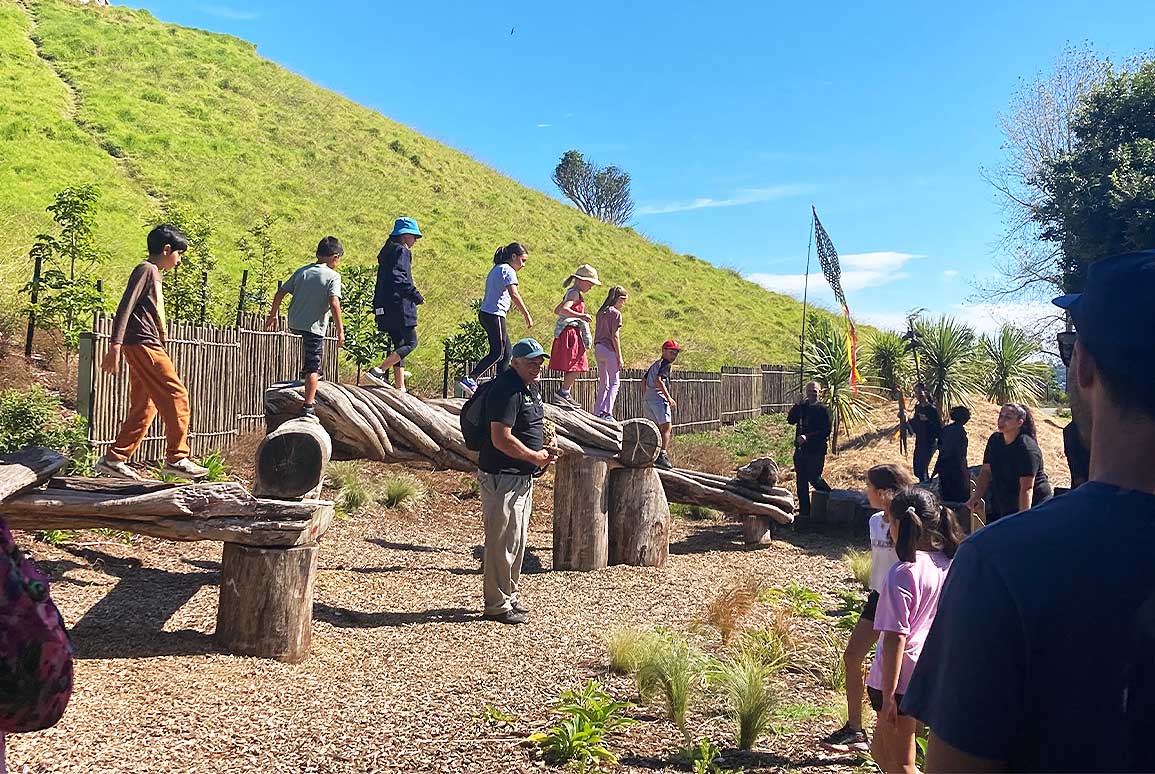Whānau Ātea awarded by Recreation Aotearoa
2 February 2024
Winner of the 2023 Te Tohu - Whaiao Māori

Boffa Miskell and Tūpuna Maunga Authority are joint winners of the 2023 Māori Outcomes Award, presented by Recreation Aotearoa.
Te Tohu - Whaiao Māori (Māori Outcomes Award) recognises a programme or organisation making significant effort to support and engage with Tāngata Māori within outdoor recreation in Aotearoa.
Whānau Ātea fuses traditional (hūpara) and contemporary play, tākaro taiao (nature play), active recreation (skatepark, basketball, kīorahi), and inclusive play; whilst preserving the many cultural practices and traditions that were once prevalent on Te Pane-a-Mataoho.
It is the first papa-tākaro in Aotearoa to provide traditional hāngī pits in a recreational space, and the first permanent and public kīorahi field in Tāmaki Makaurau with the integration of a Kapehu Whetū (Māori Star Compass). Through its design, the project demonstrates the use of te reo Māori me ōna tikanga – elements central to identity and the strengthening of a unique Māori identity.
The project was delivered as an outcome of the Tūpuna Maunga Strategies, which guide decision-making in respect to activities on the Maunga. The concept and designs for the Whānau Ātea respond to the elements and principles contained within the Design Strategy and Recreation Strategy.
Paul Majurey, chair of the Tūpuna Maunga Authority says the award win is “…splendid news. Another great outcome from our ongoing hononga.”
“Whānau Ātea has been a real step forward to the way we think and design with landscapes in Aotearoa, reinterpreting our Indigenous spaces,” says project lead Aynsley Cisaria.
“We began with community engagement, to honour mana whenua by instilling their aspirations, stories and values and allowing them the opportunity to ‘see their faces in their spaces’ and to be part of shaping their environments.”
Te Pane-a-Mataoho (Mangere Mountain) stands as one of South Auckland’s last remnant ancient landscapes. Its location, surrounded by Te Manukanuka-o-Hotūroa, and with strategic outlooks across the wider volcanic landscape, represents an important cultural hub of Māori activity across time.
“The significance of Whānau Ātea demonstrates how a Māori-led approach towards design can inform the ways our spaces and environments come together,” says landscape architect William Hatton.
“We were guided by mana whenua and community to establish meaningful and place-based design. More importantly, the significance of Whānau Ātea is that it demonstrates how whakapapa is integral to the health and wellbeing of people and place.”


